Description of the presentation for individual slides:
1 slide
Slide Description:
Probability theory problem solving. Mathematics teacher MBOU Nivnyanskaya secondary school, Nechaeva Tamara Ivanovna
2 slide

Slide Description:
Lesson objectives: to consider different types of problems in probability theory and methods for their solution. Lesson objectives: to teach to recognize different types of problems in probability theory and improve the logical thinking of schoolchildren.
3 slide

Slide Description:
Problem 1: In a random experiment, a symmetrical coin is thrown 2 times. Find the probability that the same number of heads and tails will come up.
4 slide

Slide Description:
Problem 2: The coin is thrown four times. Find the probability that it will never come up tails.
5 slide

Slide Description:
Problem 3: In a random experiment, a symmetrical coin is thrown twice. Find the probability that it will be heads exactly once. Solution: In order to find the probability of the specified event, it is necessary to consider all possible outcomes of the experiment, and then select favorable outcomes from them (favorable outcomes are outcomes that satisfy the requirements of the problem). In our case, those outcomes will be favorable in which, with two tosses of a symmetrical coin, heads will fall out only once. The probability of an event is calculated as the ratio of the number of favorable outcomes to the total number of outcomes. Consequently, the probability that when a symmetrical coin is thrown twice, the heads will fall out only once, is equal to: P \u003d 2/4 \u003d 0.5 \u003d 50% Answer: the probability that as a result of the above experiment the heads will fall out only once is equal to 50 %. Experiment number 1st throw 2nd throw How many times heads came up 1 Head Head 2 2 Heads Heads 0 3 Heads Heads 1 4 Heads Heads 1
6 slide

Slide Description:
Problem 4. The dice was thrown once. What is the probability that the number of points is greater than 4. Solution: A random experiment - rolling a die. Elementary event - the number on the dropped face. Answer: 1/3 Total faces: 1, 2, 3, 4, 5, 6 Elementary events: N \u003d 6 N (A) \u003d 2
7 slide

Slide Description:
Problem 5. The biathlete shoots at targets five times. The probability of hitting a target with one shot is 0.8. Find the probability that the biathlete hit the targets the first three times and missed the last two. Round the result to the nearest hundredth. Solution: Probability of hit \u003d 0.8 Probability of miss \u003d 1 - 0.8 \u003d 0.2 A \u003d (hit, hit, hit, missed, missed) According to the formula for multiplying the probabilities P (A) \u003d 0.8 ∙ 0.8 ∙ 0.8 ∙ 0.2 ∙ 0.2 P (A) \u003d 0.512 ∙ 0.04 \u003d 0.02048 ≈ 0.02 Answer: 0.02
8 slide

Slide Description:
Problem 6: In a random experiment, two dice are rolled. Find the probability that the sum of the dropped out points is 6. Round the answer to the nearest hundredth. Solution: The elementary outcome in this experiment is an ordered pair of numbers. The first number will fall on the first die, the second on the second. It is convenient to present a set of elementary outcomes in a table. Rows correspond to the number of points on the first die, columns - on the second die. There are n \u003d 36 elementary events in total. Let us write in each cell the sum of the dropped out points and paint over the cells where the sum is 6. There are 5. There are 5. This means that the event A \u003d (the sum of the dropped out points is 6) favors 5 elementary outcomes. Therefore, m \u003d 5. Therefore, P (A) \u003d 5/36 \u003d 0.14. Answer: 0.14. 2 3 4 5 6 7 3 4 5 6 7 8 4 5 6 7 8 9 5 6 7 8 9 10 6 7 8 9 10 11 7 8 9 10 11 12
9 slide

Slide Description:
Probability Formula Theorem Let a coin be thrown n times. Then the probability that heads will land exactly k times can be found by the formula: Where Cnk is the number of combinations of n elements in k each, which is calculated by the formula:
10 slide

Slide Description:
Problem 7. The coin is thrown four times. Find the probability that it will be heads exactly three times. Solution According to the condition of the problem, the total number of throws was n \u003d 4. Required number of heads: k \u003d 3. Substitute n and k into the formula: You can just as well count the number of tails: k \u003d 4 - 3 \u003d 1. The answer will be the same. Answer: 0.25
11 slide

Slide Description:
Problem 8. The coin is thrown three times. Find the probability that it will never come up tails. Solution Again, write out the numbers n and k. Since the coin is thrown 3 times, n \u003d 3. And since there should be no tails, k \u003d 0. It remains to substitute the numbers n and k into the formula: Let me remind you that 0! \u003d 1 by definition. Therefore, C30 \u003d 1. Answer: 0.125
12 slide

Slide Description:
Problem 9: In a random experiment, a symmetrical coin is thrown 4 times. Find the probability that heads will come up more times than tails. Solution: To have more heads than tails, they must come out either 3 times (then there will be 1 tails), or 4 (then there will be no tails at all). Let's find the probability of each of these events. Let p1 be the probability that heads will land 3 times. Then n \u003d 4, k \u003d 3. We have: Now we find p2 - the probability that heads will come out all 4 times. In this case n \u003d 4, k \u003d 4. We have: To get the answer, it remains to add the probabilities p1 and p2. Remember, you can only add probabilities for mutually exclusive events. We have: p \u003d p1 + p2 \u003d 0.25 + 0.0625 \u003d 0.3125 Answer: 0.3125
13 slide

Slide Description:
Problem 10. Before the start of the volleyball match, the team captains draw an honest lot to determine which team will start the ball game. The Stator team takes turns playing with the Rotor, Motor and Starter teams. Find the probability that Stator will only start the first and last games. Solution. It is required to find the probability of the production of three events: "Stator" starts the first game, does not start the second game, starts the third game. The probability of producing independent events is equal to the product of the probabilities of these events. The probability of each of them is 0.5, whence we find: 0.5 · 0.5 · 0.5 \u003d 0.125. Answer: 0.125.
In the theory of probability, there is a group of problems, for the solution of which it is enough to know the classical definition of probability and to visualize the proposed situation. Such problems are most coin toss and dice throw problems. Let us recall the classical definition of probability.
Probability of event A (the objective possibility of an event occurring in numerical terms) is equal to the ratio of the number of outcomes favorable to this event to the total number of all equally possible incompatible elementary outcomes: P (A) \u003d m / nwhere:
- m is the number of elementary test outcomes that favor the occurrence of event A;
- n is the total number of all possible elementary test outcomes.
It is convenient to determine the number of possible elementary test outcomes and the number of favorable outcomes in the problems under consideration by enumerating all possible options (combinations) and direct calculation.
From the table we see that the number of possible elementary outcomes is n \u003d 4. Favorable outcomes of the event A \u003d (heads fall 1 time) correspond to options 2 and 3 of the experiment, there are two such options m \u003d 2.
Find the probability of the event P (A) \u003d m / n \u003d 2/4 \u003d 0.5
Task 2 ... In a random experiment, a symmetrical coin is thrown twice. Find the probability that it will never land heads.
Decision
... Since the coin is thrown twice, then, as in Problem 1, the number of possible elementary outcomes is n \u003d 4. Favorable outcomes of the event A \u003d (heads will not fall out even once) correspond to option 4 of the experiment (see the table in task 1). There is only one such option, so m \u003d 1.
Find the probability of the event P (A) \u003d m / n \u003d 1/4 \u003d 0.25
Problem 3 ... In a random experiment, a symmetrical coin is thrown three times. Find the probability that heads will come up exactly 2 times.
Decision ... Possible variants of three coin tosses (all possible combinations of heads and tails) are presented in the form of a table:
From the table we see that the number of possible elementary outcomes is n \u003d 8. Favorable outcomes of the event A \u003d (heads fall 2 times) correspond to options 5, 6 and 7 of the experiment. There are three such options, which means m \u003d 3.
Find the probability of the event P (A) \u003d m / n \u003d 3/8 \u003d 0.375
Problem 4 ... In a random experiment, a symmetrical coin is thrown four times. Find the probability that heads will land exactly 3 times.
Decision ... Possible variants of four coin tosses (all possible combinations of heads and tails) are presented in the form of a table:
| Option No. | 1st throw | 2nd throw | 3rd throw | 4th throw | Option No. | 1st throw | 2nd throw | 3rd throw | 4th throw |
| 1 | Eagle | Eagle | Eagle | Eagle | 9 | Tails | Eagle | Tails | Eagle |
| 2 | Eagle | Tails | Tails | Tails | 10 | Eagle | Tails | Eagle | Tails |
| 3 | Tails | Eagle | Tails | Tails | 11 | Eagle | Tails | Tails | Eagle |
| 4 | Tails | Tails | Eagle | Tails | 12 | Eagle | Eagle | Eagle | Tails |
| 5 | Tails | Tails | Tails | Eagle | 13 | Tails | Eagle | Eagle | Eagle |
| 6 | Eagle | Eagle | Tails | Tails | 14 | Eagle | Tails | Eagle | Eagle |
| 7 | Tails | Eagle | Eagle | Tails | 15 | Eagle | Eagle | Tails | Eagle |
| 8 | Tails | Tails | Eagle | Eagle | 16 | Tails | Tails | Tails | Tails |
From the table we see that the number of possible elementary outcomes is n \u003d 16. Favorable outcomes of the event A \u003d (heads fall 3 times) correspond to options 12, 13, 14 and 15 of the experiment, so m \u003d 4.
Find the probability of the event P (A) \u003d m / n \u003d 4/16 \u003d 0.25
 |
Determination of Probability in Dice Problems
Problem 5 ... Determine the probability that more than 3 points will be rolled when rolling the dice (correct die).
Decision
... When throwing a dice (correct dice), any of its six faces can fall out, i.e. any of the elementary events occur - a drop from 1 to 6 points (points). Hence, the number of possible elementary outcomes is n \u003d 6.
Event А \u003d (more than 3 points dropped out) means that 4, 5 or 6 points (points) fell out. Hence, the number of favorable outcomes is m \u003d 3.
The probability of an event P (A) \u003d m / n \u003d 3/6 \u003d 0.5
Problem 6 ... Determine the probability that when throwing a dice, the number of points is not more than 4. Round the result to thousandths.
Decision
... When throwing a dice, any of its six faces can fall out, i.e. any of the elementary events occur - a drop from 1 to 6 points (points). Hence, the number of possible elementary outcomes is n \u003d 6.
Event А \u003d (no more than 4 points dropped out) means that 4, 3, 2 or 1 point (point) fell out. Hence, the number of favorable outcomes is m \u003d 4.
The probability of an event P (A) \u003d m / n \u003d 4/6 \u003d 0.6666 ... ≈0.667
Problem 7 ... The dice are rolled twice. Find the probability that both times the number is less than 4.
Decision ... Since the dice (dice) is thrown twice, we will reason as follows: if the first dice has one point, then the second one can get 1, 2, 3, 4, 5, 6. We get pairs (1; 1), (1; 2), (1; 3), (1; 4), (1; 5), (1; 6) and so on with each face. All cases are presented in the form of a table of 6 rows and 6 columns:
| 1; 1 | 2; 1 | 3; 1 | 4; 1 | 5; 1 | 6; 1 |
| 1; 2 | 2; 2 | 3; 2 | 4; 2 | 5; 2 | 6; 2 |
| 1; 3 | 2; 3 | 3; 3 | 4; 3 | 5; 3 | 6; 3 |
| 1; 4 | 2; 4 | 3; 4 | 4; 4 | 5; 4 | 6; 4 |
| 1; 5 | 2; 5 | 3; 5 | 4; 5 | 5; 5 | 6; 5 |
| 1; 6 | 2; 6 | 3; 6 | 4; 6 | 5; 6 | 6; 6 |
Favorable outcomes of the event A \u003d (both times a number less than 4 dropped out) (they are highlighted in bold), we will count and get m \u003d 9.
We find the probability of the event P (A) \u003d m / n \u003d 9/36 \u003d 0.25
Problem 8 ... The dice are rolled twice. Find the probability that the largest of the two drawn numbers is 5. Round your answer to the nearest thousand.
Decision ... All possible outcomes of two throws of the dice are presented in the table:
| 1; 1 | 2; 1 | 3; 1 | 4; 1 | 5; 1 | 6; 1 |
| 1; 2 | 2; 2 | 3; 2 | 4; 2 | 5; 2 | 6; 2 |
| 1; 3 | 2; 3 | 3; 3 | 4; 3 | 5; 3 | 6; 3 |
| 1; 4 | 2; 4 | 3; 4 | 4; 4 | 5; 4 | 6; 4 |
| 1; 5 | 2; 5 | 3; 5 | 4; 5 | 5; 5 | 6; 5 |
| 1; 6 | 2; 6 | 3; 6 | 4; 6 | 5; 6 | 6; 6 |
From the table we see that the number of possible elementary outcomes is n \u003d 6 * 6 \u003d 36.
Favorable outcomes of the event A \u003d (the largest of the two drawn numbers is 5) (they are highlighted in bold) will be calculated and we will get m \u003d 8.
We find the probability of the event P (A) \u003d m / n \u003d 8/36 \u003d 0.2222 ... ≈0.222
Problem 9 ... The dice are rolled twice. Find the probability that at least once a number dropped out less than 4.
Decision ... All possible outcomes of two throws of the dice are presented in the table:
| 1; 1 | 2; 1 | 3; 1 | 4; 1 | 5; 1 | 6; 1 |
| 1; 2 | 2; 2 | 3; 2 | 4; 2 | 5; 2 | 6; 2 |
| 1; 3 | 2; 3 | 3; 3 | 4; 3 | 5; 3 | 6; 3 |
| 1; 4 | 2; 4 | 3; 4 | 4; 4 | 5; 4 | 6; 4 |
| 1; 5 | 2; 5 | 3; 5 | 4; 5 | 5; 5 | 6; 5 |
| 1; 6 | 2; 6 | 3; 6 | 4; 6 | 5; 6 | 6; 6 |
From the table we see that the number of possible elementary outcomes is n \u003d 6 * 6 \u003d 36.
The phrase "at least once a number less than 4 fell out" means "a number less than 4 fell out once or twice", then the number of favorable outcomes of the event A \u003d (at least once a number less than 4 fell out) (they are highlighted in bold) m \u003d 27.
Find the probability of the event P (A) \u003d m / n \u003d 27/36 \u003d 0.75
Problem statement: In a random experiment, a symmetrical coin is thrown twice. Find the probability that heads (tails) will not come up even once (it will come up exactly / at least 1, 2 times).
The problem is included in the USE in mathematics of the basic level for grade 11 under number 10 (The classical definition of probability).
Let's see how similar tasks are solved using examples.
Example task 1:
In a random experiment, a symmetrical coin is thrown twice. Find the probability that heads will never come up.
OO OR RO RR
There were 4 such combinations in total. We are only interested in those of them in which there is not a single eagle. There is only one such combination (PP).
P \u003d 1/4 \u003d 0.25
Answer: 0.25
Example task 2:
In a random experiment, a symmetrical coin is thrown twice. Find the probability that heads will come up exactly two times.
Consider all the possible combinations that can occur if a coin is thrown twice. For convenience, we will denote heads by the letter O, and tails by the letter P:
OO OR RO RR
There are 4 such combinations in total. We are only interested in those of them in which the heads fall exactly 2 times. There is only one such combination (OO).
P \u003d 1/4 \u003d 0.25
Answer: 0.25
Example task 3:
In a random experiment, a symmetrical coin is thrown twice. Find the probability that heads will come up exactly once.
Consider all the possible combinations that can occur if a coin is thrown twice. For convenience, we will denote heads by the letter O, and tails by the letter P:
OO OR RO RR
There were 4 such combinations in total. We are only interested in those of them in which the heads fell exactly 1 time. There are only two such combinations (OP and RO).
Answer: 0.5
Example task 4:
In a random experiment, a symmetrical coin is thrown twice. Find the probability that heads will come up at least once.
Consider all the possible combinations that can occur if a coin is thrown twice. For convenience, we will denote heads by the letter O, and tails by the letter P:
OO OR RO RR
There are 4 such combinations in total. We are only interested in those of them in which heads fall at least 1 time. There are only three such combinations (OO, OP and RO).
P \u003d 3/4 \u003d 0.75
In the problems on the theory of probability, which are presented in the exam number 4, besides, there are problems on tossing a coin and on dice rolls. Today we will analyze them.
Coin Toss Problems
Objective 1. A symmetrical coin is thrown twice. Find the probability that it will come up tails exactly once.
In such problems, it is convenient to write down all possible outcomes, writing them down using the letters P (tails) and O (heads). So, the outcome of OP means that the first throw comes up heads, and the second - tails. In the problem under consideration, 4 outcomes are possible: PP, RO, OP, OO. Two outcomes favor the event “heads will come up exactly once”: RO and OP. The sought probability is.
Answer: 0.5.

Objective 2. A symmetrical coin is thrown three times. Find the probability that heads will be thrown exactly two times.
In total, 8 outcomes are possible: RRR, RRO, ROR, ROO, ORR, ORO, OOR, LLC. Three outcomes favor the event “heads fall exactly two times”: ROO, ORO, OOR. The sought probability is.
Answer: 0.375.
Objective 3. Before the start of a football match, the referee flips a coin to determine which team will start the ball game. The Emerald team plays three matches with different teams. Find the probability that the Emerald will win the toss exactly once in these games.
This task is similar to the previous one. Let each time a tails hit means the Emerald wins the lot (this assumption does not affect the calculation of the probabilities). Then 8 outcomes are possible: RRR, RRO, ROR, ROO, ORR, ORO, OOR, LLC. Three outcomes favor the event “tails will come up exactly once”: ROO, ORO, OOR. The sought probability is.
Answer: 0.375.
Problem 4... The symmetrical coin is thrown three times. Find the probability that the outcome of the ROO will come (tails for the first time, heads for the second and third).
As in the previous problems, there are 8 outcomes here: PPR, PPO, POR, ROO, ORR, ORO, OOR, LLC. The probability of the onset of the ROO outcome is equal to.
Answer: 0.125.
Dice Roll Problems
Task 5. The dice are rolled twice. How many elementary outcomes of the experience favor the event “the sum of points is 8”?
Problem 6... Two dice are thrown at the same time. Find the probability that the total will be 4 points. Round the result to the nearest hundredth.
In general, if dice are thrown, then there are equally possible outcomes. The same number of outcomes is obtained if the same die is rolled once in a row.
The event “4 in total” is favored by the following outcomes: 1 - 3, 2 - 2, 3 - 1. Their number is equal to 3. The desired probability is equal.
To calculate the approximate value of the fraction, it is convenient to use the division with a corner. Thus, it is approximately equal to 0.083 ..., rounded to the nearest hundredths, we have 0.08.
Answer: 0.08
Problem 7... Three dice are thrown at the same time. Find the probability that the total will be 5 points. Round the result to the nearest hundredth.
The outcome will be three numbers: the points dropped on the first, second and third dice. In total, there are equally possible outcomes. The event "5 in total" is favored by the following outcomes: 1–1–3, 1–3–1, 3–1–1, 1–2–2, 2–1–2, 2–2–1. Their number is 6. The desired probability is. To calculate the approximate value of the fraction, it is convenient to use the division with a corner. Approximately we get 0.027 ..., rounded to hundredths, we get 0.03. Source “Preparation for the Unified State Exam. Maths. Probability theory ”. Edited by F.F. Lysenko, S.Yu. Kulabukhova

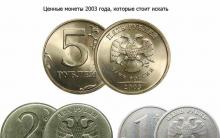
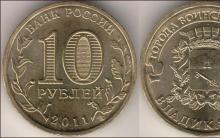
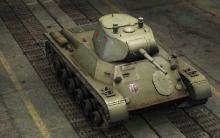
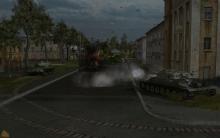
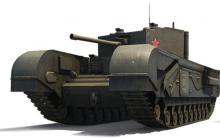





All valuable Russian coins in one list!
Investment Coin Plan
Current prices for coins of russia and the ussr
The emblem of the celebration of the 70th anniversary of the victory approved
Two reasons why chess is a sport